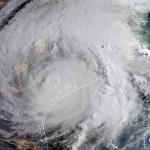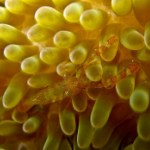Caribbean
Hurricane Harvey visited a near-biblical deluge upon Houston, dropping over 40 inches of rain on parts of the city. The situation resulted from warmer ocean waters, more moisture in the atmosphere, and Houston's geography along with its preparedness for the disaster. Greg Laden shows hotter sea surface temperatures in the Tropics and the Gulf of Mexico allowed Harvey to gain extra strength as it formed and re-formed on its way to the United States. In another post, Greg asks if Houston's infrastructure could have been better-prepared for this type of rainfall, suggesting that "Houston is…
Populations around the world face many severe water challenges, from scarcity to contamination, from political or violent conflict to economic disruption. As populations and economies grow, peak water pressures on existing renewable water resources also tend to grow up to the point that natural scarcity begins to constrain the options of water planners and managers. At this point, the effects of natural fluctuations in water availability in the form of extreme weather events become even more potentially disruptive than normal. In particular, droughts begin to bite deeply into human well-being…
Caribbean sun anemone. Image from Wikimedia, Omar Spence Photography.
Dr. George Chandy at the University of California, Irvine discovered a toxin in Caribbean sun anemones (see photo) in 1984 and has spent his career studying the toxin. Prior work by his team suggested that a synthetic version of a peptide (ShK-186) from the toxin may help treat autoimmune disease. It works by blocking a specific potassium channel (Kv1.3) important in immune system reactivity. Since potassium channels are also important in the regulation of metabolism and body weight, his team wanted to explore…

